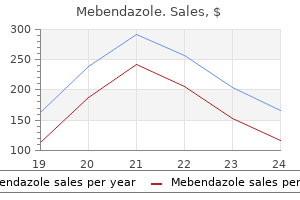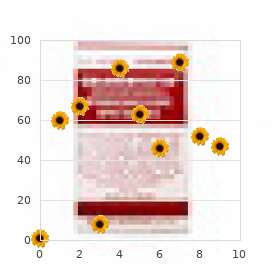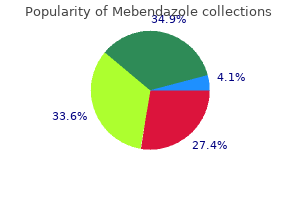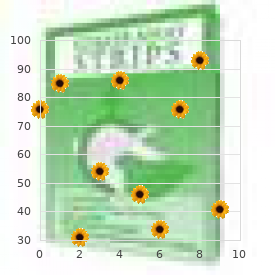Only $0.32 per item
Mebendazole dosages: 100 mg
Mebendazole packs: 60 pills, 90 pills, 120 pills, 180 pills, 270 pills, 360 pills
In stock: 666
9 of 10
Votes: 201 votes
Total customer reviews: 201
Description
Anorexia nervosa can be overlooked as patients may demonstrate excessive weight loss while complaining of an inability to eat adequate amounts to sustain weight or inability to eat due to abdominal pain xylometazolin antiviral mebendazole 100 mg buy on-line. Bulimia can present as excessive exercise, vomiting for calorie control (which may be attributed by the patient to nausea or plugging), or laxative abuse. Other manifestations may include severely limiting diet choices or preoccupation with food or weight. Persistent inability to eat adequate amounts to maintain a desirable weight should be discussed with the medical team. Unhealthy Eating Habits A pattern of limiting calories to maintain weight loss without regard to diet quality can result in diet-related chronic diseases in addition to eventual weight regain as tolerance for unhealthy foods increases. Although there may be some food intolerances and volumes of food may be limited, a healthy diet following bariatric surgery is a balanced diet containing low-fat and low-sugar unrefined foods from all food groups. Maladaptive Eating Eating behaviors that are counterproductive, unhealthy, or lead patients away from their goals are considered maladaptive. Examples include grazing, emotional eating, mindless eating, and eating disorders: · Grazing: the term grazing refers to a pattern of frequent snacking throughout the day and has been identified as a significant factor in weight regain following bariatric surgery [9]. As diet recall and food records are reviewed, assess frequency of intake, and when greater than 36 eating episodes a day, remind patients of the need to plan meals and snacks regularly with protein and complex carbohydrates. Cognitive behavioral principles including self-monitoring, contingency planning, and stimulus control can be helpful. Failure to adopt Inactivity Regular exercise and physical activity has been shown to correlate with amount of weight loss and increased likelihood of maintaining that loss [10]. Patients who had adopted regular exercise may, for various reasons, become inconsistent or stop exercising altogether. Education on the role of exercise in long-term weight management and overall help should be reviewed as should strategies for adopting exercise such as realistic goal setting and self-monitoring. Because of the nature of weight loss surgery as a tool in weight management and as a life-altering intervention that has the potential long-term to cause complications such as ulcers and nutrient deficiencies and because maintenance of desired weight loss and health will hinge on conscious behaviors, lifelong education may be necessary. Education Components Prior to intervention, certain patient characteristics and barriers to learning should be considered. These include assessment of patient learning needs (including correction of misconceptions), readiness to learn, preferred learning styles, literacy and numeracy, cognitive capacity, language and cultural factors, and visual and hearing impairment. Assessment of Learning Needs Components, Theories, and Approaches to Education and Counseling Beyond the responsibility to provide patients with information, the goal of optimal patient outcomes requires that approaches be effective so patients can understand and apply recommendations to daily life. Both education and counseling are essential components of effective interventions. The Academy of Nutrition and Dietetics (formerly the American Dietetic Association) distinguishes between education and counseling as follows: Nutrition education is defined as "a formal process to instruct or train a patient or client in a skill or to impart knowledge to help [them] voluntarily manage or modify food choices and eating behavior to maintain or improve health. Posttests and questions regarding information provided during instruction allow for assessment of patient understanding and need for further education.

Opuntia (Prickly Pear Cactus). Mebendazole.
- High blood cholesterol, obesity, colitis, diarrhea, enlarged prostate, and treating infections caused by viruses.
- What other names is Prickly Pear Cactus known by?
- Are there any interactions with medications?
- How does Prickly Pear Cactus work?
- Diabetes. Some forms of prickly pear cactus seem to lower blood sugar levels in people who have type 2 diabetes.
- Hangover. Taking prickly pear cactus before drinking alcohol might reduce some symptoms of hangover the next day.
- Dosing considerations for Prickly Pear Cactus.
Source: http://www.rxlist.com/script/main/art.asp?articlekey=96848
Readiness to Learn One theory of adult learning states that adults will more readily learn stages of hiv infection cdc mebendazole 100 mg lowest price, retain, and apply information they perceive to be important [12]. Information and skills that the patient identifies as valuable and important to learn constitute their perceived learning needs. As two distinct processes, education and counseling require different practitioner skills. Knowledge of learning and counseling theories helps the practitioner to develop and adapt more effective interventions for a heterogeneous audience. Dietetics practitioners working with bariatric surgery patients require strong skills in both categories of intervention to effectively assist the patients in understanding and applying recommended lifestyle changes associated with bariatric surgery and healthy, lifelong weight management. The most common educational and counseling theories used in the healthcare setting have some common threads, but each offers additional and unique focus. Although little research has been conducted to demonstrate the superiority or effectiveness of any one educational strategy or behavior change theory or model to bariatric surgery patients, it is reasonable to assume that the counseling theories and strategies that have been successfully applied to health behavior change for other health behaviors also apply to the bariatric surgery population. Components of effective education and counseling theories and models as applied to health behaviors, including those behaviors required for successful bariatric surgery, will be discussed. Preferred Learning Styles Learning styles should be considered when developing an educational plan. Visual learners benefit from having information written and by viewing charts, graphs, pictures, and labels. Kinetic learners learn best by applying information or through active participation in the learning process. They may benefit from role-playing and hands-on experiences such as doing a goal-setting exercise or comparing supplement labels. In teaching a group class or leading a support group, incorporate a variety of teaching strategies to accommodate a variety of learning styles. Literacy, Numeracy, and Cognitive Capacity Patients may not admit to having difficulty reading or with numbers. Indicators of illiteracy include incomplete forms, frustration, medication non-adherence, or statements such as 96 T. Written materials should be written at or below the sixth grade level and should include pictures, bullet points, and large easily readable font. This model can serve to prompt healthcare providers to facilitate the individual to explore their personal health concerns. Language and Cultural Factors Practitioners should be sensitive to cultural issues relevant to diet and nutrition as well as social issues that may affect self-care. Examples include having information available on halal, kosher, or vegetarian supplements and having culturally adapted meal plans. Counseling Various counseling theories have been studied and applied to health-related behaviors such as medication compliance, weight management, healthy eating, and exercise. Some theories and strategies include the health belief model, social learning theory, transtheoretical model, cognitive behavioral therapy, and motivational interviewing.

Specifications/Details
Gastric bypass surgery hiv infection globally mebendazole 100 mg buy amex, but not caloric restriction, decreases dipeptidyl peptidase-4 activity in obese patients with type 2 diabetes. Changes in glucose homeostasis after Roux-en-Y gastric bypass surgery for obesity at day three, two months, and one year after surgery: role of gut peptides. The gut hormone response following Roux-en-Y gastric bypass: cross-sectional and prospective study. Predictors of incretin concentrations in subjects with normal, impaired, and diabetic glucose tolerance. Superior appetite hormone profile after equivalent weight loss by gastric bypass compared to gastric banding. Euglycemic hyperinsulinemia, but not lipid infusion, decreases circulating ghrelin levels in humans. Rise of oxyntomodulin in response to oral glucose after gastric bypass surgery in patients with type 2 diabetes. Dezaki K, Sone H, Koizumi M, Nakata M, Kakei M, Nagai H, Hosoda H, Kangawa K, Yada T. Blockade of pancreatic isletderived ghrelin enhances insulin secretion to prevent high-fat dietinduced glucose intolerance. The decrease in plasma ghrelin concentrations following bariatric surgery depends on the functional integrity of the fundus. Effects of two variants of Roux-en-Y Gastric bypass on metabolism behaviour: focus on plasma ghrelin concentrations over a 2-year followup. Ghrelin and adipose tissue regulatory peptides: effect of gastric bypass surgery in obese humans. Peterli R, Wölnerhanssen B, Peters T, Devaux N, Kern B, Christoffel-Courtin C, Drewe J, von Flüe M, Beglinger C. Improvement in glucose metabolism after bariatric surgery: comparison of laparoscopic Roux-en-Y gastric bypass and laparoscopic sleeve gastrectomy: a prospective randomized trial. Early changes in ghrelin following Roux-en-Y gastric bypass: influence of vagal nerve functionality Perathoner A, Weiss H, Santner W, Brandacher G, Laimer E, Höller E, Aigner F, Klaus A. Vagal nerve dissection during pouch formation in laparoscopic Roux-Y-gastric bypass for technical simplification: does it matter Ponce J, Haynes B, Paynter S, Fromm R, Lindsey B, Shafer A, Manahan E, Sutterfield C. The mechanism of diabetes control after gastrointestinal bypass surgery reveals a role of the proximal small intestine in the pathophysiology of type 2 diabetes. Laparoscopic adjustable gastric banding with truncal vagotomy versus laparoscopic adjustable gastric banding alone: interim results of a prospective randomized trial. Criteria for assessing esophageal motility in laparoscopic adjustable 5 Mechanisms of Action of the Bariatric Procedures gastric band patients: the importance of the lower esophageal contractile segment. Laparoscopic adjustable gastric banding induces prolonged satiety: a randomized blind crossover study.
Syndromes
- Cleidocranial dysostosis
- Headache
- Resting as much as possible for at least a week
- Loss of sensation of any part of the face or body
- Mouth sores
- National Gaucher Foundation: www.gaucherdisease.org
- Heart failure
- Any fracture in an infant too young to walk or crawl
- MRI of the neck

Sometimes postoperative patients feel bulletproof for 1 garlic antiviral buy mebendazole 100 mg on line, 2, and even 3 years, only to rediscover that surgery really is only a powerful tool. When a patient returns to the program with the chief complaint of weight gain, it is important to reemphasize the postoperative guidelines of nutrition, vitamin supplementation, and the role of exercise and education. Encouraging these patients to return to a support group can be very effective at helping them lose their regained weight and reestablish the importance of ongoing follow-up. The patient must accept the fact that maintaining weight loss is an ongoing, lifetime commitment and effort. Patients should be congratulated on taking responsibility for reaching out for the necessary support. The program should 19 the Importance of a Multidisciplinary Team Approach 191 provide the opportunity to get them back on track in the continuum of care pathway. It is essential that the facilitator be a well-trained professional who represents the surgeon and the program with a unified mission, in other words, an arm of the program. The leader should have training or experience in group facilitation and be capable of creating a constant format for the meeting-providing a compassionate and empathetic environment that enables the patient to feel comfortable. The psychologist, registered nurse, registered dietician, and surgeon can be equally successful and effective. However, they should possess basic characteristics of a qualified group facilitator. The Four Phases There are some common characteristics observed in bariatric patients, in my experience. The support group facilitator should have some insight into these phases in order to best understand the group dynamics. I break them up into four phases commonly exhibited in various stages from the preoperative period and years after surgery: 1. The "Hope Phase" this phase consists of patients who decided to have surgery and are preparing for it. They are extremely optimistic and are commonly full of questions for the group participants. They are, often for the first time in their life, surrounded by a group of individuals who understand their plight, sense of guilt, defeat, and hopelessness. The veterans in the group will eagerly share their experiences and give advice and encouragement. It is important the facilitator not allow the patient to monopolize the meeting, allowing others to speak and voice their questions, concerns, and opinions.
Related Products
Additional information:
Usage: p.o.

Tags: mebendazole 100 mg order visa, mebendazole 100 mg for sale, generic mebendazole 100 mg visa, order mebendazole 100 mg with mastercard
Customer Reviews
Ningal, 35 years: Recommended routine preoperative nutrition screens include protein (albumin, prealbumin), the minerals iron and zinc, as well as the vitamins B12, folate, pyridoxine (vitamin B6), thiamin (vitamin B1), and the fat-soluble vitamins A, D, E, and K. Nutrition professionals should critically evaluate whether they can resolve or improve the selected nutrition diagnosis, determine the "root cause" of the nutrition problem, and then determine measurable signs and symptoms that will best indicate that the nutrition problem has resolved or improved. Presentation of the Massive-Weight-Loss Patient to the Plastic Surgeon Most patients seek the care of a plastic surgeon after they have started their weight-loss journey.
Sugut, 31 years: For these reasons, the question as to how to manage these patients becomes pertinent [15, 16]. Revisional Surgery Morbid obesity is a complex problem, and no single solution is likely to be a panacea. Long-term psychosocial adjustment of older vs younger survivors of breast and endometrial cancer.
Kent, 41 years: Research indicates that there may be a cyclical relation between negative emotional states and various forms of disinhibited eating (like binge eating or grazing). Nonetheless, bariatric surgery is very effective in treating insulin resistance and type 2 diabetes mellitus. Gastric bypass is performed at a later date, after the patient has recovered from the band removal surgery.
Deckard, 42 years: A large percentage of Registry patients also continue to self-monitor their food intake and daily calories. A recent paper suggests that patients with alcohol dependence attend substance abuse treatment and pass drug screens for at least 1 year prior to bariatric surgery [22]. Therefore, it is important to be thorough in the proper technique and to follow patients closely after surgery to avoid long-term complications or failure.



